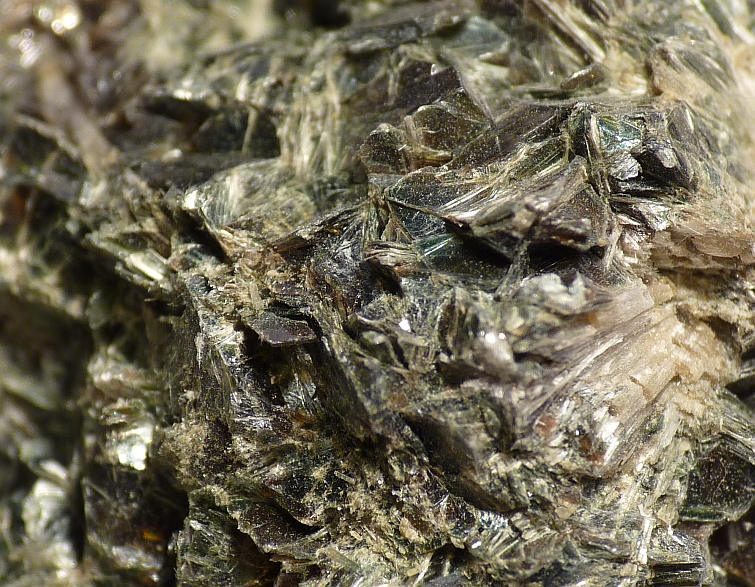|
HaBonim, Israel
HaBonim ( he, הַבּוֹנִים, The Builders) is a moshav shitufi in northern Israel. Located 5 km south of Atlit and 3 km north of Kibbutz Nahsholim, it falls under the jurisdiction of Hof HaCarmel Regional Council. In it had a population of . History The moshav was founded in 1949 by the HaBonim movement on land that had belonged to the depopulated Arab village of Kafr Lam. The first residents were from the United Kingdom and South Africa. It came to national prominence on 11 June 1985 due to the HaBonim disaster, in which a bus and train collided, killing 22 people, of which 19 were schoolchildren. A monument was erected at the train crossing. Landmarks Located in the eastern part of the moshav grounds is the ruined medieval fortress of Cafarlet Cafarlet or Capharleth ( Crusader name) or Kafr Lam (Arabic name) is an Early Muslim coastal fortress of the Roman castrum type. Today it is located inside Moshav HaBonim, Israel, on lands of the now abando ... [...More Info...] [...Related Items...] OR: [Wikipedia] [Google] [Baidu] |
Habonim Dror
Habonim Dror ( he, הַבּוֹנִים דְּרוֹר, "the builders–freedom") is the evolution of two Jewish Labour Zionist youth movements that merged in 1982. Habonim ( he, הַבּוֹנִים, "the builders") was founded in 1929 in the United Kingdom and over a period of years, spread to all English-speaking countries. Each country developed its own independent version of the original movement whilst sharing the core ideology of being a Jewish Socialist-Zionist cultural youth movement. Dror ( he, דְּרוֹר, "freedom") was founded in Poland in 1915 out of a wing of the ''Tze'irei Tziyon'' (Zion Youth) study circle. The majority of ''Tze'irei Tziyon'' had merged with a group called ''Hashomer'' in 1913 to form ''Hashomer Hatzair'', and those who remained outside of the new group formed Dror. The group was influenced by the teachings of the Russian Narodniks. Members of Dror participated in the Warsaw Ghetto uprising. Mordechaj Tenenbaum and other Dror members organ ... [...More Info...] [...Related Items...] OR: [Wikipedia] [Google] [Baidu] |
1949 Establishments In Israel
Events January * January 1 – A United Nations-sponsored ceasefire brings an end to the Indo-Pakistani War of 1947. The war results in a stalemate and the division of Kashmir, which still continues as of 2022. * January 2 – Luis Muñoz Marín becomes the first democratically elected Governor of Puerto Rico. * January 11 – The first "networked" television broadcasts take place, as KDKA-TV in Pittsburgh, Pennsylvania goes on the air, connecting east coast and mid-west programming in the United States. * January 16 – Şemsettin Günaltay forms the new government of Turkey. It is the 18th government, last single party government of the Republican People's Party. * January 17 – The first VW Type 1 to arrive in the United States, a 1948 model, is brought to New York by Dutch businessman Ben Pon. Unable to interest dealers or importers in the Volkswagen, Pon sells the sample car to pay his travel expenses. Only two 1949 models are sold in America that ... [...More Info...] [...Related Items...] OR: [Wikipedia] [Google] [Baidu] |
Populated Places In Haifa District
Population typically refers to the number of people in a single area, whether it be a city or town, region, country, continent, or the world. Governments typically quantify the size of the resident population within their jurisdiction using a census, a process of collecting, analysing, compiling, and publishing data regarding a population. Perspectives of various disciplines Social sciences In sociology and population geography, population refers to a group of human beings with some predefined criterion in common, such as location, race, ethnicity, nationality, or religion. Demography is a social science which entails the statistical study of populations. Ecology In ecology, a population is a group of organisms of the same species who inhabit the same particular geographical area and are capable of interbreeding. The area of a sexual population is the area where inter-breeding is possible between any pair within the area and more probable than cross-breeding with in ... [...More Info...] [...Related Items...] OR: [Wikipedia] [Google] [Baidu] |
Moshavim
A moshav ( he, מוֹשָׁב, plural ', lit. ''settlement, village'') is a type of Israeli town or settlement, in particular a type of cooperative agricultural community of individual farms pioneered by the Labour Zionists between 1904 and 1914, during what is known as the second wave of ''aliyah''. A resident or a member of a moshav can be called a "moshavnik" (). The moshavim are similar to kibbutzim with an emphasis on community labour. They were designed as part of the Zionist state-building programme following the green revolution Yishuv ("settlement") in the British Mandate of Palestine during the early 20th century, but in contrast to the collective farming kibbutzim, farms in a moshav tended to be individually owned but of fixed and equal size. Workers produced crops and other goods on their properties through individual or pooled labour with the profit and foodstuffs going to provide for themselves. Moshavim are governed by an elected council ( he, ועד, ''va'a ... [...More Info...] [...Related Items...] OR: [Wikipedia] [Google] [Baidu] |
Perlite
Perlite is an amorphous volcanic glass that has a relatively high water content, typically formed by the hydration of obsidian. It occurs naturally and has the unusual property of greatly expanding when heated sufficiently. It is an industrial mineral, suitable "as ceramic flux to lower the sintering temperature", and a commercial product useful for its low density after processing. Properties Perlite softens when it reaches temperatures of . Water trapped in the structure of the material vaporises and escapes, and this causes the expansion of the material to 7–16 times its original volume. The expanded material is a brilliant white, due to the reflectivity of the trapped bubbles. Unexpanded ("raw") perlite has a bulk density around 1100 kg/m3 (1.1 g/cm3), while typical expanded perlite has a bulk density of about 30–150 kg/m3 (0.03–0.150 g/cm3). Typical analysis *70–75% silicon dioxide: SiO2 *12–15% aluminium oxide: Al2O3 *3–4% sodium oxide: Na2O *3� ... [...More Info...] [...Related Items...] OR: [Wikipedia] [Google] [Baidu] |
Vermiculite
Vermiculite is a hydrous phyllosilicate mineral which undergoes significant expansion when heated. Exfoliation occurs when the mineral is heated sufficiently, and commercial furnaces can routinely produce this effect. Vermiculite forms by the weathering or hydrothermal alteration of biotite or phlogopite. http://www.mindat.org/min-4170.html Mindat.org Large commercial vermiculite mines currently exist in the United States, Russia, South Africa, China, and Brazil. Occurrence Vermiculite was first described in 1824 for an occurrence in Millbury, Massachusetts. Its name is from Latin , "to breed worms", for the manner in which it exfoliates when heated. It typically occurs as an alteration product at the contact between felsic and mafic or ultramafic rocks such as pyroxenites and dunites. It also occurs in carbonatites and metamorphosed magnesium-rich limestone. Associated mineral phases include: corundum, apatite, serpentine, and talc. It occurs interlayered with chlo ... [...More Info...] [...Related Items...] OR: [Wikipedia] [Google] [Baidu] |
Cafarlet
Cafarlet or Capharleth ( Crusader name) or Kafr Lam (Arabic name) is an Early Muslim coastal fortress of the Roman castrum type. Today it is located inside Moshav HaBonim, Israel, on lands of the now abandoned Arab village of Kafr Lam. It was built in the 8th or 9th century, during the Umayyad or Abbasid period to serve as a ribat against Byzantine attacks, and was significantly modified and reused by the Crusaders. It is one of the few surviving ancient fortifications in Israel featuring round watchtower A watchtower or watch tower is a type of fortification used in many parts of the world. It differs from a regular tower in that its primary use is military and from a turret in that it is usually a freestanding structure. Its main purpose is to ...s, indicating the fortress' origins predate the crusader era. Most surviving ancient fortifications in the region feature rectangular watchtowers, typical of the style prevalent in Europe during the time of the crusaders. History ... [...More Info...] [...Related Items...] OR: [Wikipedia] [Google] [Baidu] |
Fortification
A fortification is a military construction or building designed for the defense of territories in warfare, and is also used to establish rule in a region during peacetime. The term is derived from Latin ''fortis'' ("strong") and ''facere'' ("to make"). From very early history to modern times, defensive walls have often been necessary for cities to survive in an ever-changing world of invasion and conquest. Some settlements in the Indus Valley civilization were the first small cities to be fortified. In ancient Greece, large stone walls had been built in Mycenaean Greece, such as the ancient site of Mycenae (famous for the huge stone blocks of its ' cyclopean' walls). A Greek '' phrourion'' was a fortified collection of buildings used as a military garrison, and is the equivalent of the Roman castellum or English fortress. These constructions mainly served the purpose of a watch tower, to guard certain roads, passes, and borders. Though smaller than a real fortress, th ... [...More Info...] [...Related Items...] OR: [Wikipedia] [Google] [Baidu] |
Medieval
In the history of Europe, the Middle Ages or medieval period lasted approximately from the late 5th to the late 15th centuries, similar to the post-classical period of global history. It began with the fall of the Western Roman Empire and transitioned into the Renaissance and the Age of Discovery. The Middle Ages is the middle period of the three traditional divisions of Western history: classical antiquity, the medieval period, and the modern period. The medieval period is itself subdivided into the Early, High, and Late Middle Ages. Population decline, counterurbanisation, the collapse of centralized authority, invasions, and mass migrations of tribes, which had begun in late antiquity, continued into the Early Middle Ages. The large-scale movements of the Migration Period, including various Germanic peoples, formed new kingdoms in what remained of the Western Roman Empire. In the 7th century, North Africa and the Middle East—most recently part of the Eastern Roman ... [...More Info...] [...Related Items...] OR: [Wikipedia] [Google] [Baidu] |
HaBonim Disaster
HaBonim disaster was an accident which took place on June 11, 1985, when a train collided with a bus carrying schoolchildren on a field trip from Y.H. Brenner middle school in Petah Tikva, Israel. The crash happened near Moshav HaBonim, killing 22 people (19 students, a teacher, the bus driver, and a parent chaperone), and injuring 17. The bus involved in the incident was the second of four buses taking seventh graders from Y.H. Brenner middle school on an outing to the beach near HaBonim. The accident occurred along the coastal railway line at a level crossing on a rural dirt road less than a mile from the beach. The crossing was marked by signs, but as it was a little-used crossing on a secondary road in a rural area, it had no gates or crossing signals to warn of an approaching train. The director of Israel Railways said that the first bus made it safely across the tracks, while the second bus probably got stuck on the crossing as it tried to cross the railroad. A Haifa-bound p ... [...More Info...] [...Related Items...] OR: [Wikipedia] [Google] [Baidu] |
.jpg)








